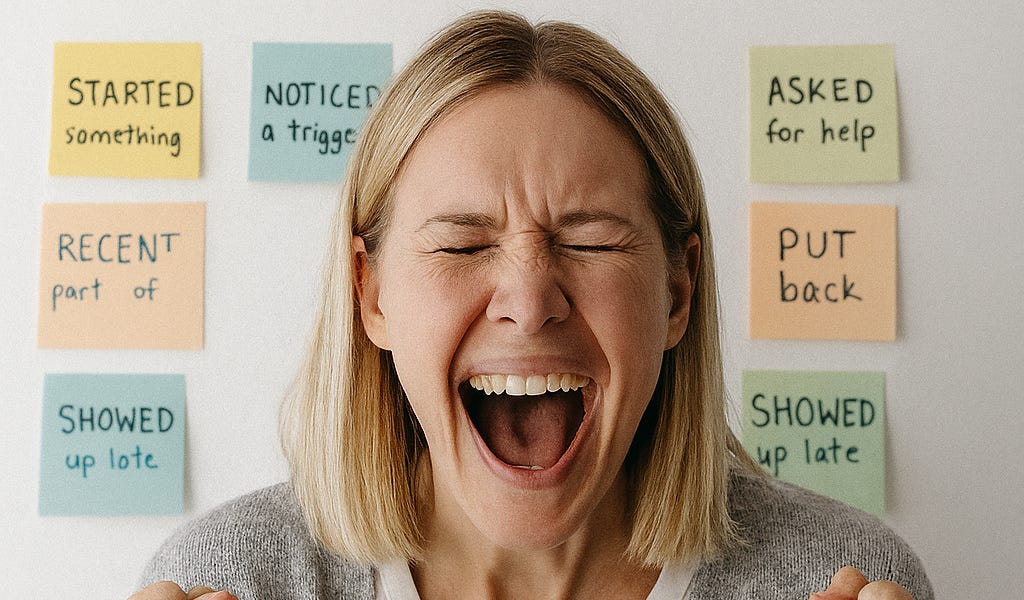Experiencing Rejection Sensitivity Dysphoria in Real Time
I experienced a heavy wave of rejection last night.
I noticed that my close friends had gathered together for what I can only assume was a New Year’s celebration. The thing is—I didn’t get an invite. The day before, I had spoken to one of them and we’d made plans to hang out. When the evening came and I hadn’t heard anything, I reached out. No response.
Fifteen minutes later, I saw a friend post an Instagram story of them all together, laughing and having a great time.
I texted again, asking about the get-together. Still nothing.
I felt incredibly hurt—overlooked, unseen, invisible. In my body, the pain was joined by rage. My immediate reaction was to cut them off entirely. That you don’t care, so I don’t care instinct kicked in hard. I wanted to go for the jugular and make them feel as hurt as I did.
But I’ve lived with RSD long enough to know how this usually goes.
It always gets turned back on me. I become the bad guy for having feelings at all.
Rejection sensitivity dysphoria doesn’t just show up in dramatic moments. It lives quietly inside everyday social dynamics. Missed invitations. Unanswered texts. A shift in tone. For many people, these moments sting and pass. But for those of us with RSD, they can feel catastrophic, as if our sense of safety, belonging, and worth is suddenly on trial. It’s not about wanting special treatment. It’s about how our nervous systems interpret perceived rejection as something deeply threatening.
I vented to other friends. I know they were trying to help, but nothing they said landed.
“Tell them how you feel.”
“They love you—they didn’t do it on purpose.”
“They probably just wanted to keep it small.”
To me, it all felt like phony bologna. If they cared, wouldn’t they have invited me?
Instead, I felt like an afterthought—or worse, not a thought at all. Like they secretly don’t like me, or maybe even loathe me. I’ve known these people for over twenty years. You’d think I’d cross their minds.
I know adulthood creates distance. Life happens. People move away. Some stay. I stayed too. But this group was once incredibly close. And now, the friends I still have here don’t seem to want to see me very often. My truest friends live out of state.
So, I’m lonely here. I’m alone. And when you’re lonely, everything feels sharper. Louder. More painful.
I know how this probably sounds to some people.
Why can’t she just get over it?
Why can’t she see it wasn’t intentional?
Believe me—I hear those thoughts too. And every time, they come back to bite me. I end up feeling foolish. Too emotional. Too reactive. The one who jumps to conclusions too fast.
Rejection sensitivity follows me everywhere. It leaves a lasting imprint. Today, I still feel hurt—and I know I’ll think about this for years. I’ve already laid there numb and crying, replaying every possible scenario. Every why. Every what if.
Now, I feel guilty. Guilty for venting. Ashamed for calling a few of them out and saying they all suck. Once again, my RSD has painted me as the villain.
I wish people understood how consuming and painful rejection sensitivity dysphoria can be. It’s real. It’s not something you can simply control or logic your way out of. My reactions are instinctual—and often turn inward in self-destructive ways before I even realize what’s happening.
RSD shows up when you least expect it. But it’s also always there, waiting—ready to crack and shatter you into a million pieces.
RSD is closely tied to ADHD and autism. I have both. So, for me, it’s ever-present. A given. I just want more control over it. and I want to think clearly without being clouded by intrusive thoughts. I want space between the trigger and the spiral.
It’s hard to live this way—especially when people don’t understand you.
Have you ever reacted strongly to feeling excluded or overlooked—and later wondered if rejection sensitivity played a role in how deeply it affected you?
“Rejection sensitivity doesn’t mean I am too much. It means my nervous system has learned to brace for loss.” – Unknown
#MentalHealth #Neurodiversity #ADHD #ADHDInGirls #Anxiety #AutismSpectrumDisorder #Autism





